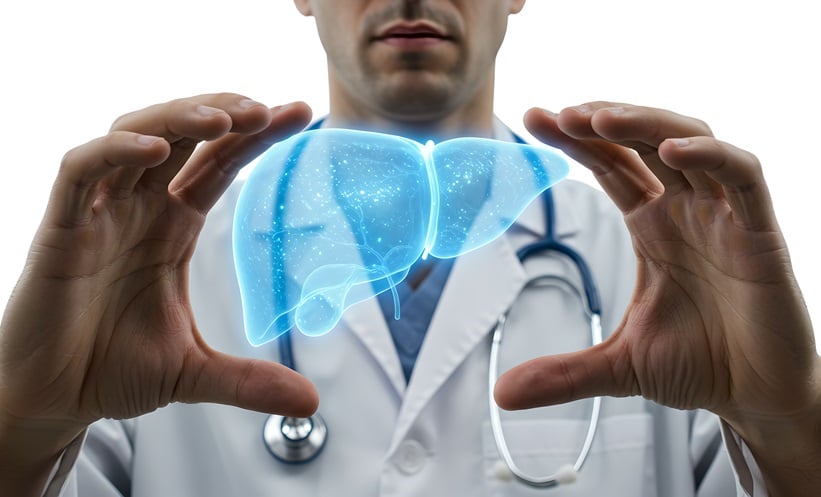BACKGROUND AND AIMS
Metabolic and cardiovascular complications are an important burden in patients after liver transplantation (LT) for many reasons, including as a result of immunosuppressive therapy.1-3 Adipose mass is an independent predictor of morbidity in the general population and in other diseases,4,5 but little is known in the transplant setting.6 Therefore, the aim of this study was to evaluate the role of adipose mass at the time of LT, in regard to the outcomes of morbidity and mortality after LT.
METHODS
We enrolled 173 patients who received LT for end-stage liver disease between 2000 and 2015 and were subsequently monitored in our outpatient clinic with periodical controls. Patients with a minimum follow-up time of 3 years after LT were included. Nutritional assessment before LT was derived by the analysis of an available CT scan (L3-L4 slice), performed within a year before LT. In all patients, the authors evaluated the area (cm2) of visceral, subcutaneous, and intramuscular adipose tissue; all measurements were indexed by patients’ height (cm2/m2) to obtain subcutaneous adipose tissue (SAT), visceral adipose tissue (VAT), and intramuscular adipose tissue (IAT) levels. Total fat area (TAT) was derived from the formula: TAT=SAT+VAT+IAT.
RESULTS
The most common aetiology of liver disease was viral hepatitis (43%), followed by alcohol abuse (16%) and nonalcoholic steatohepatitis (13%). At the time of LT, 42% of patients were obese or overweight according to BMI (corrected for ascites), 10% had experienced cardiovascular diseases before LT (myocardial infarction, cerebral stroke, or haemodynamically significant stenosis in a major arterial vessel), 26% had a diagnosis of diabetes, 17% had arterial hypertension, and 20% had dyslipidaemia.
During the observation period after LT (120±50 months), patients who experienced cardiovascular complications significantly increased (from 10% to 39%; p=0.03) and more patients developed diabetes (from 26% to 45%; p=0.02) and arterial hypertension (from 17% to 51%; p<0.01).
TAT, IAT, and SAT, detected by CT scan before transplantation, were significantly associated with cardiovascular complications after LT (p<0.01), and were also selected by a multivariate analysis, including diabetes, arterial hypertension, and dyslipidaemia. VAT and BMI before transplantation failed to correlate with cardiovascular complications after LT.
CONCLUSION
Cardiovascular complications are increased in patients after LT. Adipose tissue, quantified by CT scan before LT, is an independent predictor of cardiovascular complications. Pre-transplant estimate of adipose tissue could be useful in identifying patients at cardiovascular risk and in performing preventive treatments. BMI, although corrected for ascites, is likely to be a less specific estimate for adipose tissue amount.








